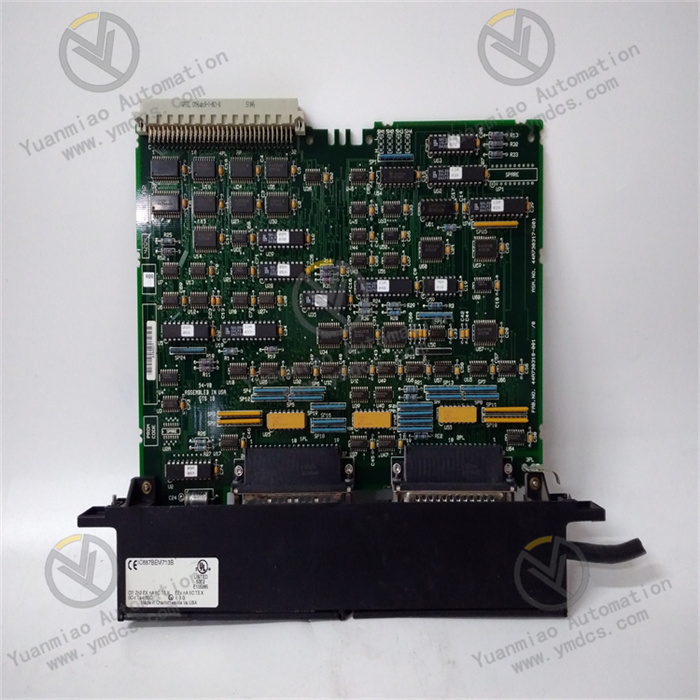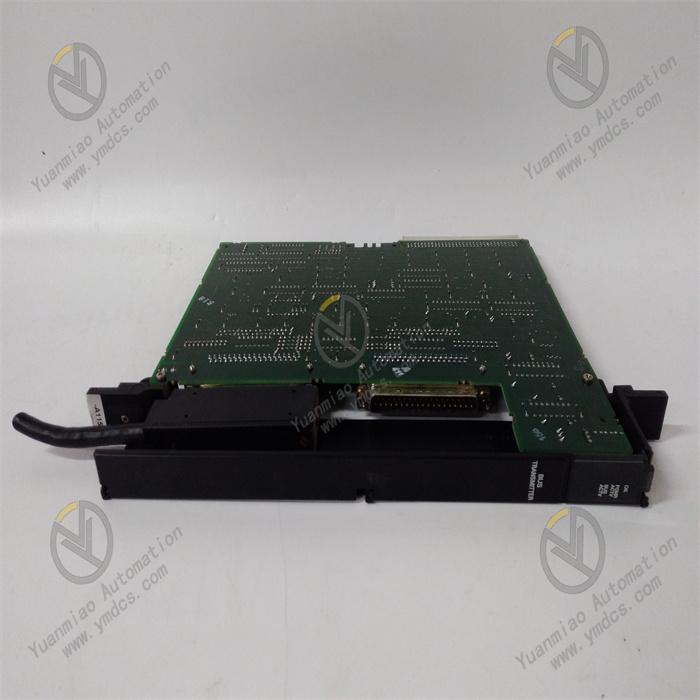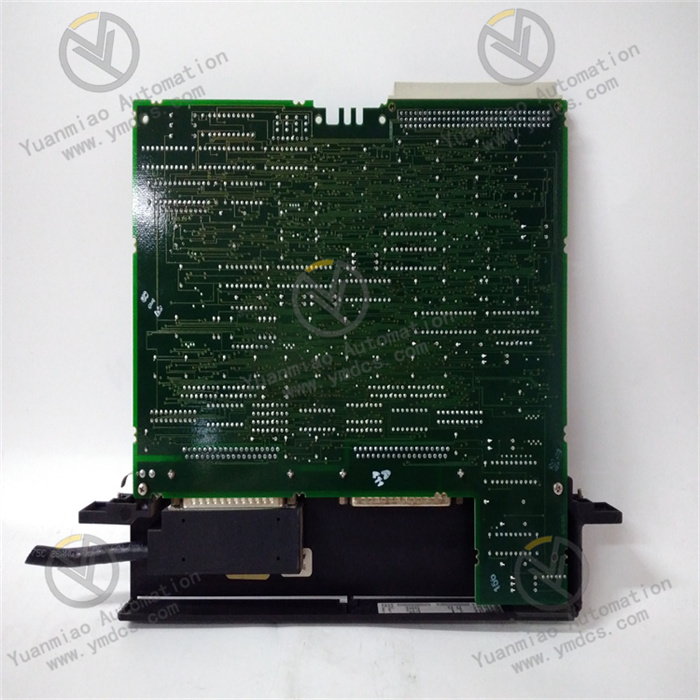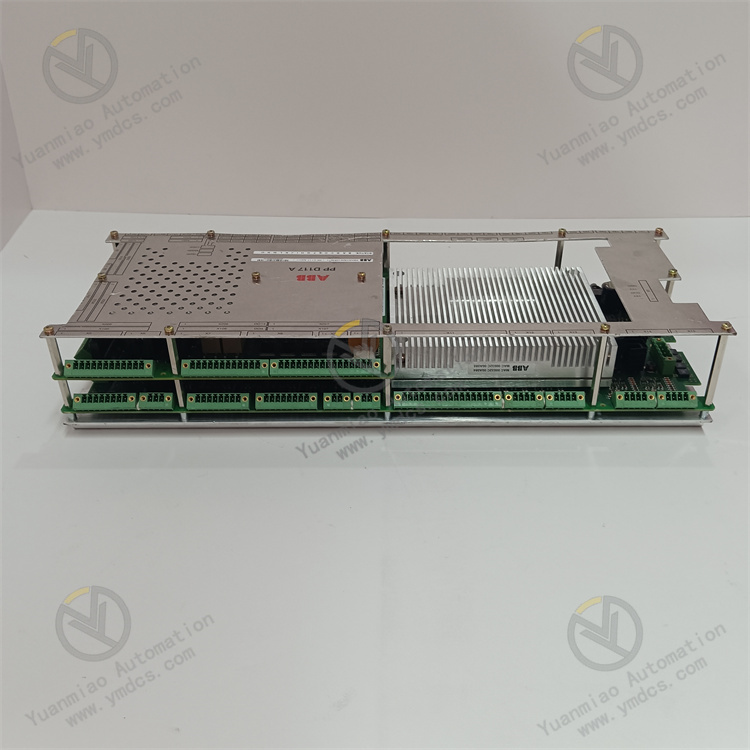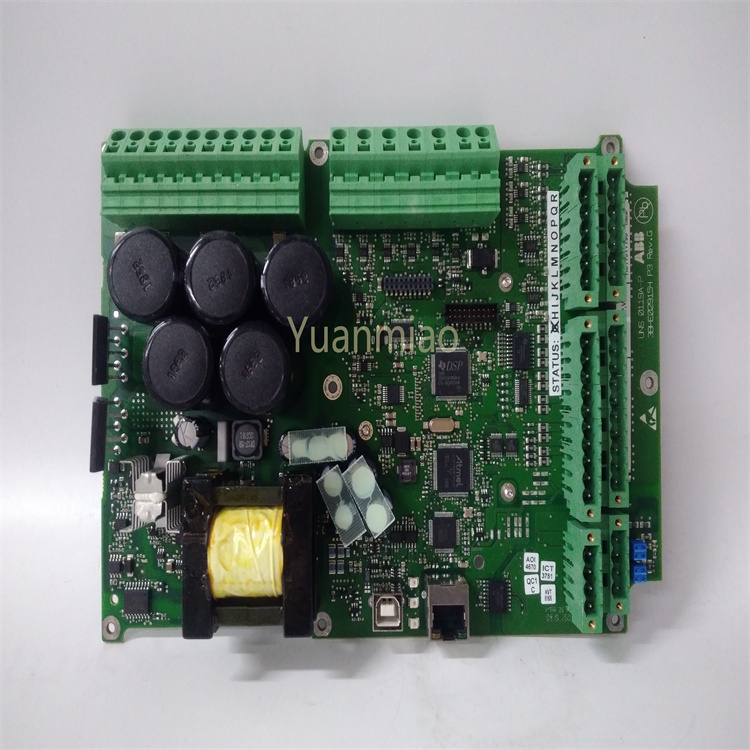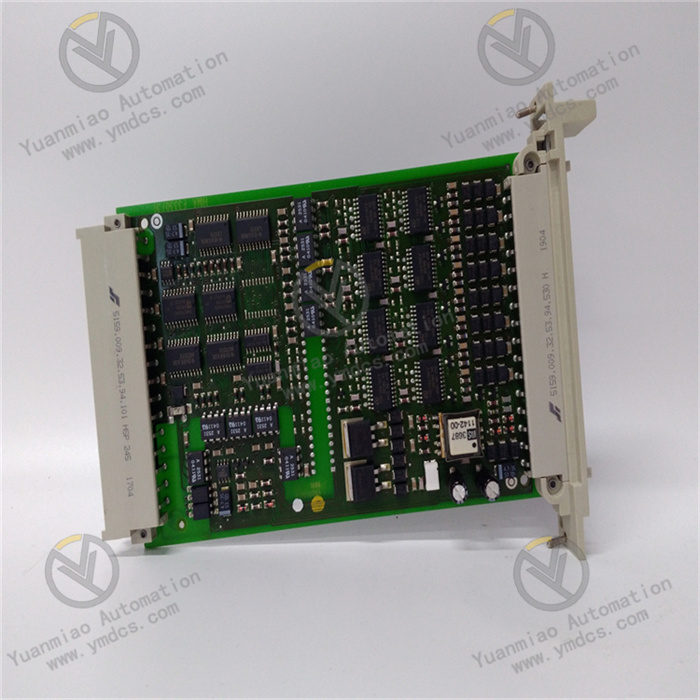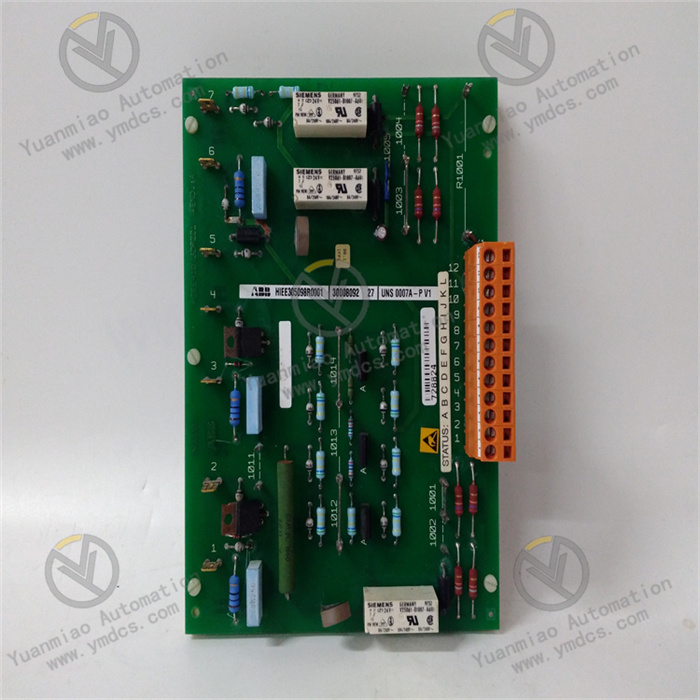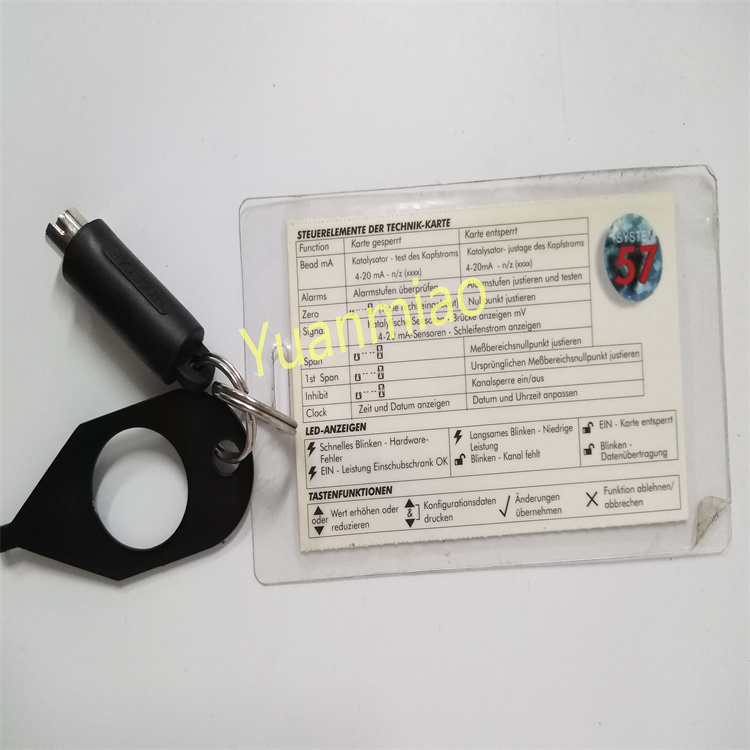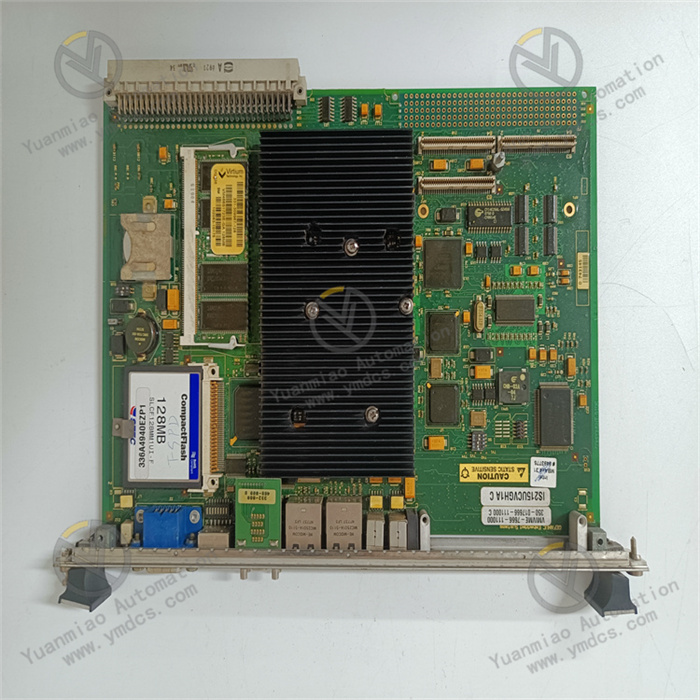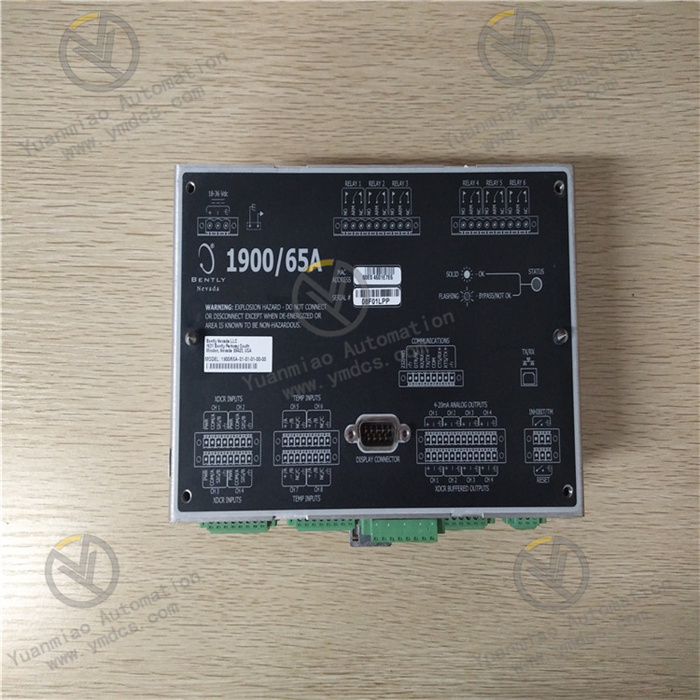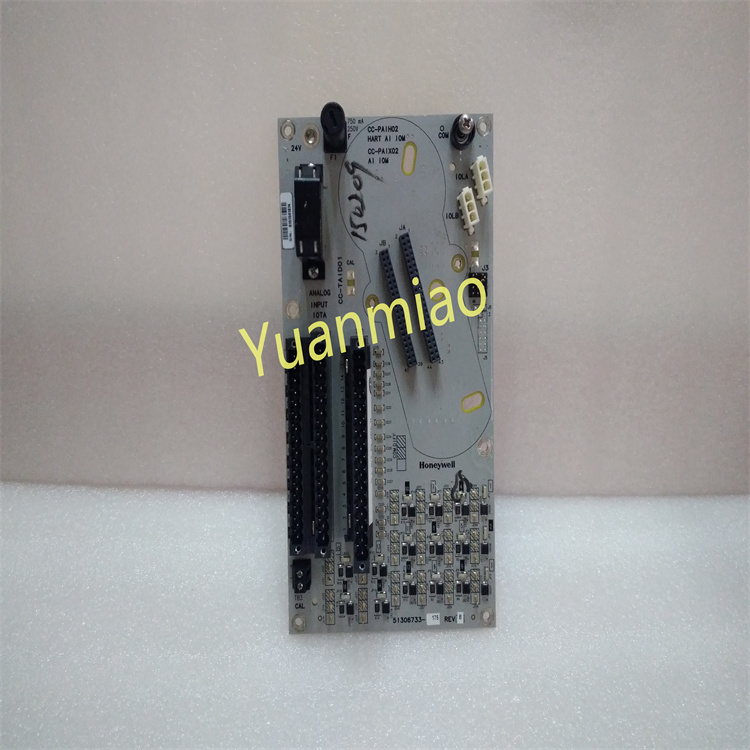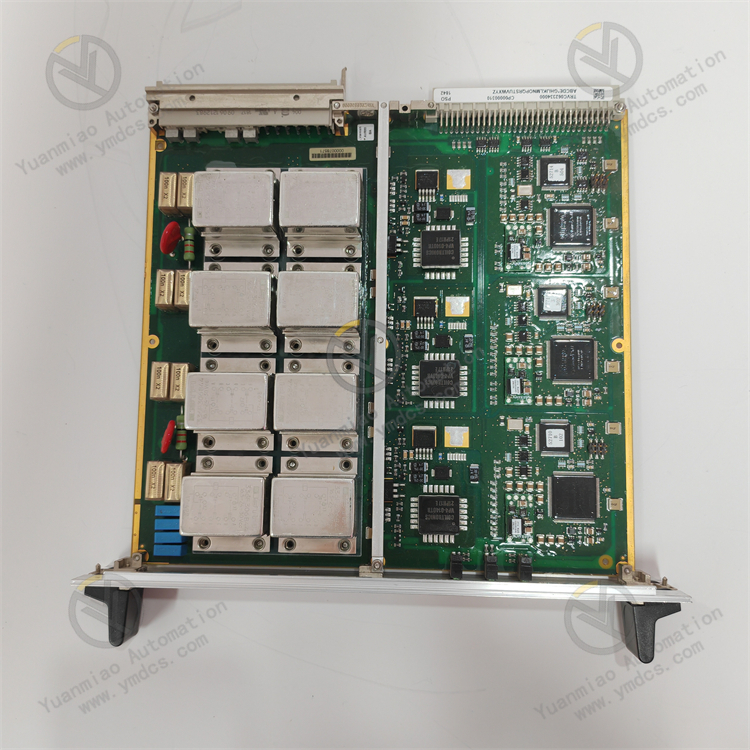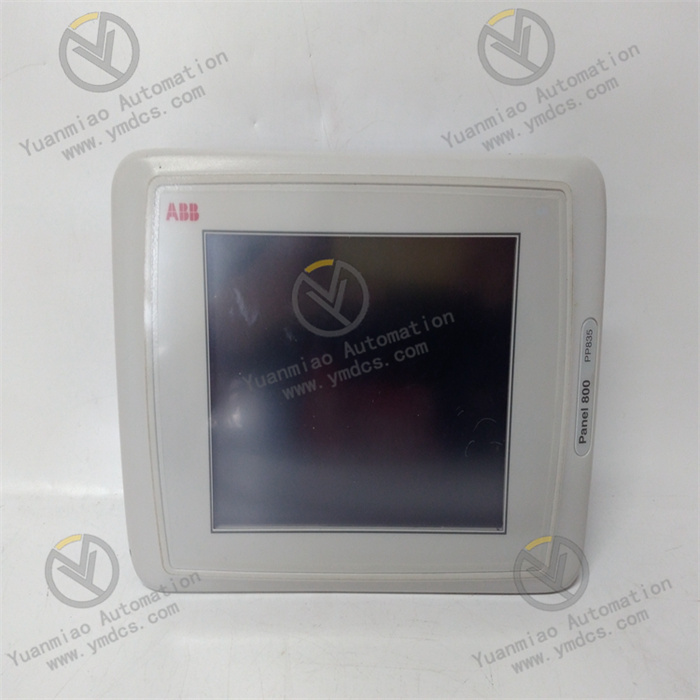Description
GE Fanuc IC687BEM713B
I. Product Overview
GE Fanuc IC687BEM713B is an industrial-grade communication expansion module belonging to the 90-70 series. Its core positioning is to serve as a "communication hub" in industrial automation systems, solving the problem of "data interconnection" between different devices and different protocols. Its main function is to expand multiple types of industrial communication interfaces for the 90-70 series PLCs, enabling efficient data interaction between PLCs and upper-level systems (such as SCADA, MES), third-party intelligent devices (such as inverters, sensors, HMI), and remote I/O modules. It is widely applicable to industrial scenarios with strict requirements for communication stability and protocol compatibility, such as power, metallurgy, and chemical industries.
As a key communication component of the 90-70 series, IC687BEM713B integrates the core advantages of "multi-protocol compatibility + high real-time performance + industrial-grade reliability":
- It supports a variety of mainstream industrial communication protocols, breaking down communication barriers between devices of different brands and types.
- Adopting a high-speed data transmission architecture, the communication delay is as low as milliseconds, meeting the real-time requirements of industrial control.
- At the same time, it has wide temperature adaptability, strong electromagnetic interference resistance, and dust-proof and moisture-proof design, enabling continuous and stable operation in industrial sites with high dust, large temperature fluctuations, and strong electromagnetic interference.
Compared with single-protocol communication modules, it has more advantages in protocol expandability; compared with general-purpose communication gateways, it has stronger native compatibility with 90-70 series PLCs, allowing rapid integration without complex configuration. Thus, it is a cost-effective choice for communication upgrading and expansion of industrial systems.
II. Technical Specifications
(I) Communication Protocols and Interface Parameters
| Parameter Category | Specific Specifications |
|---|---|
| Supported Protocols | 1. Industrial Ethernet Protocols: EtherNet/IP (supports Class 1/3 communication), Modbus TCP/IP (server/client mode); 2. Fieldbus Protocols: Profibus-DP (slave mode, supports DP V1 specification); 3. Serial Protocols: RS-485 interface supports Modbus RTU (master/slave mode) |
| Communication Interfaces | 1. 2 channels of 10/100Mbps adaptive Ethernet interfaces (RJ45 form, supports MDIX auto-crossover); 2. 1 channel of Profibus-DP interface (DB9 pin type, supports adaptive baud rate of 9.6kbps-12Mbps); 3. 1 channel of RS-485 interface (terminal block form, supports baud rate of 1200bps-115200bps, with terminal resistor) |
| Communication Delay | EtherNet/IP cyclic communication delay ≤ 5ms; Modbus TCP data transmission delay ≤ 10ms; Profibus-DP cyclic communication delay ≤ 3ms |
| Maximum Connections | The Ethernet interface supports a maximum of 32 TCP connections; the Profibus-DP interface supports a maximum of 124 slave devices; the RS-485 interface supports a maximum of 32 nodes |
(II) Hardware and Power Supply Parameters
- Processor: 32-bit industrial-grade dedicated communication processor (with a clock speed of 200MHz), supporting multi-protocol parallel processing to prevent a single protocol from occupying excessive resources.
- Storage Configuration: 8MB Flash (for storing protocol firmware and configuration files), 2MB RAM (for real-time communication data caching).
- Power Supply Requirements: 5VDC±10% bus power supply (taken from the 90-70 series PLC rack power supply), operating current ≤ 300mA, power consumption ≤ 1.5W (under full-load conditions), supporting reverse power connection protection (no damage under reverse voltage of ≤ 12V DC).
- Physical Dimensions: 101.6mm (length) × 165.1mm (width) × 50.8mm (height), compatible with 90-70 series standard racks, occupying 1 module slot, with a weight of approximately 0.25kg.
- Installation Method: 35mm DIN rail mounting (requires matching with 90-70 series racks), with a spacing of ≥ 5mm between modules to ensure heat dissipation.
(III) Environmental and Reliability Parameters
- Operating Temperature Range: -20℃~+60℃, supporting low-temperature startup (no preheating required in -20℃ environment, startup time ≤ 60s).
- Storage Temperature Range: -40℃~+85℃, humidity range 5%~95% (no condensation, compliant with IEC 60068-2-3 standard).
- Electromagnetic Interference Resistance: Compliant with EN 61000-6-2 industrial immunity standard; Electrostatic Discharge (ESD) protection level of ±8kV (contact)/±15kV (air); Radio Frequency Radiation Immunity level of 3V/m (80MHz~1GHz); Electrical Fast Transient/Burst Immunity level of 2kV (power supply terminal)/1kV (signal terminal).
- Mean Time Between Failures (MTBF): ≥ 80,000 hours (compliant with MIL-HDBK-217 standard, in 25℃ environment).
- Certification Standards: CE (EN 61010-1), UL (UL 508), RoHS 2.0.
III. Core Functional Features
(I) Multi-Protocol Compatibility to Break Down Device Communication Barriers
With "full protocol coverage + flexible switching" as its core, IC687BEM713B solves the problem of interconnection between multiple devices and multiple protocols in industrial systems:
Multi-Protocol Parallel Processing
The module has a built-in dedicated communication processor, supporting the simultaneous operation of four protocols: EtherNet/IP, Modbus TCP, Profibus-DP, and Modbus RTU. Each protocol occupies communication resources independently without interfering with each other. For example, in a rolling mill control system of a metallurgical plant, the module can communicate with Rockwell ControlLogix PLC (controlling the main drive of the rolling mill) via EtherNet/IP, connect to Siemens inverters (controlling roller speed) via Profibus-DP, and collect temperature sensor data via Modbus RTU, realizing data synergy among "main drive-roller-sensor" with the communication delay of each protocol ≤ 10ms.
Flexible Protocol Configuration
Protocol parameters can be configured graphically through GE Fanuc's dedicated programming software (such as VersaPro) without writing complex code. For example, when configuring the Modbus TCP server mode, you only need to set the IP address (e.g., 192.168.1.100), port number (default 502), and mapped PLC data address (e.g., map PLC input registers I0.0-I15.7 to Modbus addresses 40001-40016) in the software. After configuration, a data connection can be established with the upper-level SCADA system (such as Intouch).
Third-Party Device Adaptation
It supports seamless connection with mainstream industrial devices, including Siemens S7 series PLCs, Schneider ATV series inverters, Rockwell PowerFlex inverters, GE Proficy HMI, etc., without the need for custom dedicated drivers. For example, in a chemical reactor control system, it connects to Siemens S7-300 PLC (controlling the feed valve) via Profibus-DP and to Rockwell PowerFlex inverter (controlling the stirring motor) via EtherNet/IP, realizing collaborative control of devices from different brands.
(II) High-Real-Time Communication to Ensure Control Accuracy
To meet the real-time requirements of industrial control, the module has been specially optimized in terms of communication architecture and data transmission:
High-Speed Data Transmission
The Ethernet interface supports 100Mbps full-duplex communication, and the Profibus-DP interface supports a maximum baud rate of 12Mbps, which can meet the real-time transmission of large-volume data. For example, in an automobile welding production line, the module needs to transmit the operating status (such as welding current, voltage, and robot position) of 20 welding robots simultaneously. The data volume of each device is about 128 bytes per cycle. The module realizes cyclic communication via EtherNet/IP (cycle 5ms) with a total data transmission rate of 512kbps, ensuring no data loss or delay.
Priority Communication Mechanism
It supports setting communication priorities for different protocols or devices (e.g., setting EtherNet/IP cyclic communication as high priority and Modbus RTU non-cyclic communication as low priority), ensuring that key control data is transmitted first. For example, in a power substation automation system, "circuit breaker opening/closing commands" (EtherNet/IP communication) are set as high priority, and "historical data upload" (Modbus TCP communication) is set as low priority. When communication bandwidth is tight, priority is given to ensuring command transmission to avoid control delay.
Data Integrity Guarantee
It supports communication data verification (such as Modbus CRC16 verification, EtherNet/IP data frame verification). When data errors are detected, automatic retransmission is performed, and the number of retransmissions can be configured (default 3 times). For example, in a remote I/O control scenario, if the verification of the "motor start" command (digital output Q0.0) sent by the module to the remote I/O module fails, the module will automatically retransmit the command to ensure reliable delivery with a retransmission delay ≤ 1ms.
(III) Industrial-Grade Reliability to Adapt to Harsh Working Conditions
In response to the complex environment of industrial sites, the module has been enhanced in terms of hardware protection and stability:
Hardware Protection Design
- The circuit adopts a "power isolation (isolation voltage ≥ 2500Vrms) + signal shielding" design to suppress power grid fluctuations and electromagnetic interference. Near an inverter (output power 100kW) (electromagnetic radiation ≥ 10V/m), the error of analog data collected by the module is ≤ 0.5% F.S. without data jumps.
- The interface terminals use gold-plated contacts with a contact resistance ≤ 10mΩ, supporting 10,000 insertions and extractions, which is suitable for frequent wiring or maintenance needs in industrial sites. The shell is made of flame-retardant ABS material (compliant with UL94 V-0 standard) with an IP20 protection level, which can resist dust intrusion in the workshop.
Wide Temperature Adaptability and Durability
The operating temperature range covers -20℃~+60℃. The module can still operate stably in unheated workshops in northern winter (-15℃) or high-temperature workshops in southern summer (55℃), with a communication delay fluctuation ≤ 1ms. Key components (such as communication chips and terminals) use industrial-grade long-life models with a service life of ≥ 10 years, meeting the long-term operation needs of industrial equipment.
Fault Self-Recovery
It has a built-in fault monitoring and self-recovery mechanism. When a communication interruption is detected (such as a disconnected Ethernet cable), the module will automatically attempt to reconnect (reconnection interval 100ms) and automatically synchronize historical data after the connection is restored. For example, in a remote monitoring scenario, if the Ethernet cable is accidentally disconnected for 10s, the module will retransmit 200 pieces of temperature data (sampling cycle 50ms) during the disconnection period to the upper-level system after the connection is restored, ensuring data integrity.
(IV) Flexible Expansion and Convenient Operation & Maintenance
The module balances flexibility and convenience in system expansion and operation & maintenance design:
Communication Expansion Capability
It supports expanding remote I/O modules (such as GE Fanuc IC697MDL645E digital I/O module) via Profibus-DP or EtherNet/IP. Maximum expansion distance: Ethernet/IP single segment ≤ 100m (twisted pair), Profibus-DP single segment ≤ 1200m (twisted pair), which can be extended to 10km via a repeater. For example, in a large-scale warehouse logistics system, the main PLC is located in the control room. 5 remote I/O stations (each 500m away from the control room) are expanded via the Profibus-DP interface of IC687BEM713B, realizing 256 channels of digital input (collecting cargo location sensor data) and 128 channels of digital output (controlling conveyor motors) without redeploying the main PLC.
Status Monitoring and Diagnosis
The module panel is equipped with 6 LED indicators (power, Ethernet communication, Profibus-DP communication, RS-485 communication, fault, operation) to intuitively display the working status. For example, the Ethernet communication indicator (green) is always on, indicating normal Ethernet connection; blinking indicates data transmission; off indicates connection interruption. The fault indicator (red) is always on, indicating module hardware failure; blinking indicates communication protocol error. Maintenance personnel can quickly locate problems through the indicators.
Remote Debugging and Upgrade
It supports remote access to the module via the Ethernet interface (such as via Telnet or dedicated software) to modify protocol parameters, upgrade firmware, and read fault logs. For example, when the Profibus-DP firmware of a module in a remote factory needs to be upgraded, engineers can connect to the module via VPN, upload the new firmware (about 512KB), with an upgrade time ≤ 30s, no on-site operation required, reducing operation and maintenance costs.


